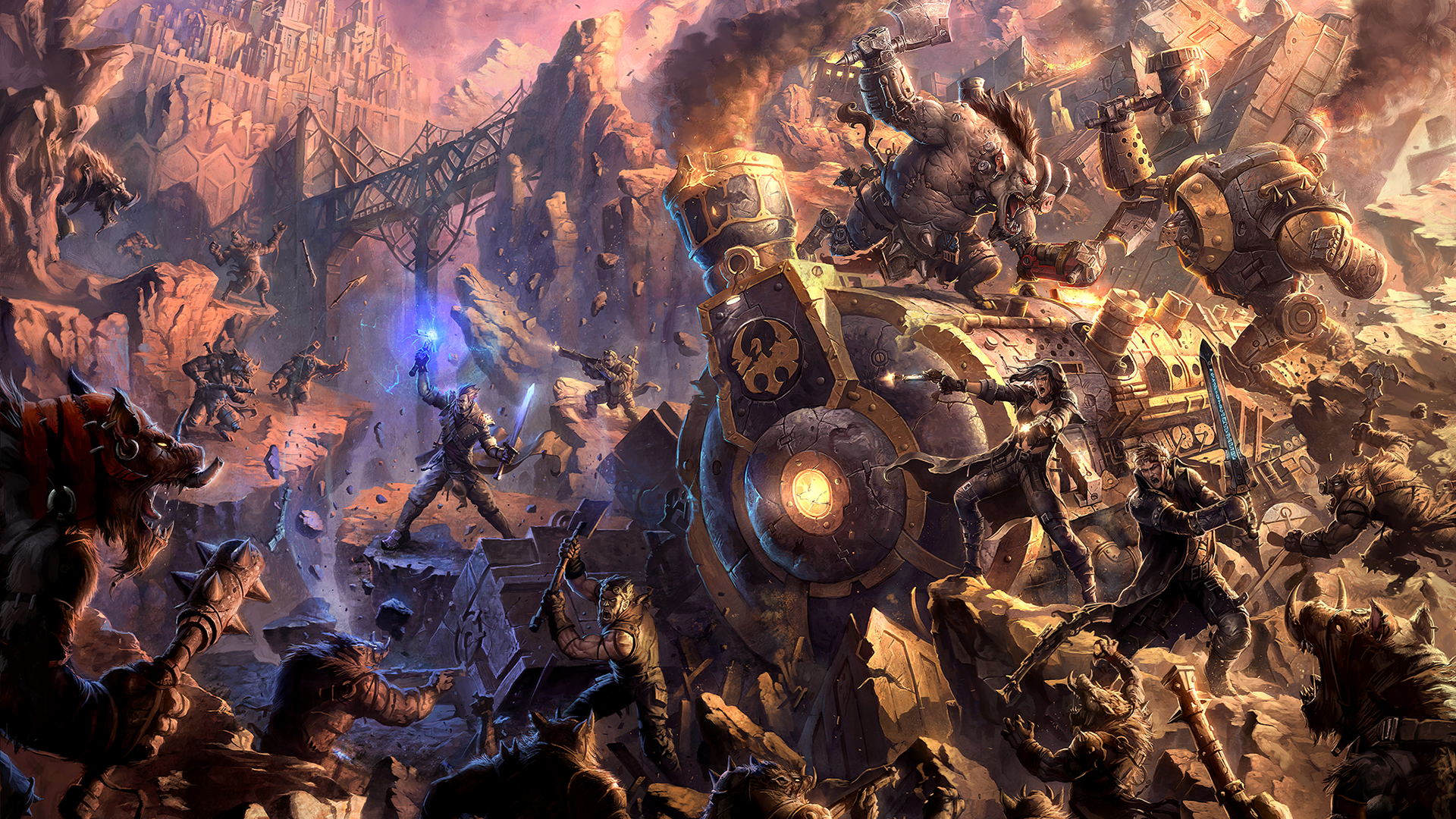
Rebellion and the Corvis Treaties
Era beginning/end
The logistics of the eventual overthrow of the Orgoth conquerors are infinitely complex, but two major factors gave the Immorese the tools they needed to ultimately drive the invaders from their shores. One was the Gift of Magic, brought to humankind by Thamar’s bargain with the infernals. The other was alchemy (see Alchemist), the first science of magic. Through the combination of magic and alchemy, the people of western Immoren were able to construct the weapons that made the Rebellion possible. The first Human sorcerers had appeared in 137 BR and within a century alchemy would provide new weapons to fight the Orgoth.
One of the most important of these weapons was Firearms. Invented by Alchemist Oliver Gulvont in 28 AR, the
earliest firearm relied on relatively simple mechanisms, but
like its modern counterparts, it utilized alchemical blasting
powder to propel shot. The efficacy of blasting powder as a
weapon had already been proven in one of the earliest battles
of the Rebellion, which took place at the fortress of Fharin
in 1 BR. The Orgoth governor had announced a tithe of
eight thousand slaves to be sent across the sea to the Orgoth
homelands—a tithe that disproportionately targeted priests
of both the Morrowan and Menite faiths. As the people of
Fharin spontaneously rose up against the Orgoth, alchemists
passed out explosives that helped swing the battle in favor
of the rebels.
The uprising at Fharin lit the fuse of the Rebellion, but the
first great battle of the age was what came to be known as
the Battle of the Hundred Wizards. On a Tordoran field in
32 AR, rebels unleashed two of their most potent weapons—
firearms and battle wizards—in a clash with Orgoth soldiers
and warwitches. Smoke blackened the sky, the earth itself
cracked apart, and the air was filled with lightning and fire.
This battle was a major blow against the Orgoth, but even
the power of magic could not alone crush the occupiers’
mighty armies.
Although it was ultimately victorious, the Rebellion was
neither easy nor quick, and nearly every victory was followed
by a subsequent defeat. As groups of rebel Alchemists unified
into the Order of the Golden Crucible and continued to
refine firearm technology, a new development was needed to
drive the Orgoth from Immorese shores.
That development took nearly two centuries of bloody
fighting to arrive. As arcanists and Alchemists were smuggled
to Caspia in order to build greater weapons of war, the first
seeds of ultimate victory over the Orgoth were planted
during the Mechankia Revolution, when arcane innovations
and alchemical advances were brought together to create the
earliest automatons and other new inventions.
In 191 AR, the first colossal strode forth from the gates of
Caspia. Even though they were rudimentary in comparison
to their later brethren, these early war machines were the
precursors of the modern warjacks and laborjacks (See Steamjacks) that are
such an integral part of life in the Iron Kingdoms today, and
they struck the decisive blow in the war against the Orgoth.
Combining the mechanikal might of the colossals with the Magic mastery of battle wizards and the killing power of
the newly evolved fFirearms, the rebels were able to cast off
the yoke of the Orgoth tyrants altogether, although it would
take another decade of intense fighting before the last of
the blackships departed the continent. The Orgoth did not
go gently. They demolished virtually everything they left
behind, razing whole cities to the ground, destroying records,
and burning what could not be taken in an event known as
the Scourge.
In the aftermath of the Rebellion’s success, the Corvis
Treaties—named for the city in which they were signed—
defined the boundaries of the four modern Iron Kingdoms:
Cygnar in the south, Khador in the north, Llael in the east,
and Ord in the west. These nations stood for centuries
to come, with all but Llael enduring until the time of
the Claiming.
Although the Corvis Treaties did not mark an end to strife
and struggle, they ushered the people of western Immoren
into a new age—one free from Orgoth oppression. In the
centuries that followed, the greatest threats to humanity’s
kingdoms came from one another—or from within. But
even as memories of the Orgoth faded, other threats grew in
the shadows.
